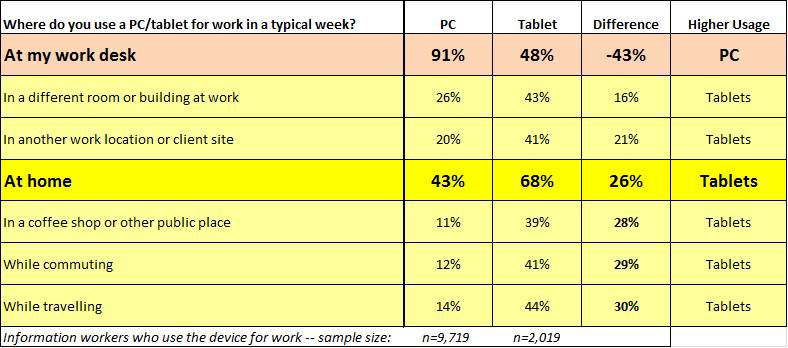The Hyper-Portability Of Tablets Drives Worker Productivity
Technology’s value to a business derives at least in part from its ability to increase productivity. The 1987 Nobel Prize winning economist Robert Solow demonstrated that technology increases the productivity of both capital and labor to create economic growth.
Some technologies radically reshape productivity. Take, for example, the cotton gin (1792), which fundamentally transformed labor. A quote from Wikipedia claims: “With a cotton gin, in one day a man could remove seed from as much upland cotton as would have previously taken a woman working two months to process at one pound a day.” By profoundly increasing worker productivity, the cotton gin revolutionized both the textile and agricultural industries.
We’re living through several technological revolutions of our own right now – in, for example, cloud services, mobility, and big data. One technology that leverages all three to some extent is the tablet, a device I follow very closely.
Tablets drive worker productivity through a variety of vectors. One of those vectors is portability. In our Forrsights Hardware Survey, we asked IT decision-makers who either support tablets today or plan to support them soon why they would do so. IT decision-makers’ #1 answer, at 62%? Because tablets are a “more portable form factor than the traditional laptop.” This response eclipsed end user preferences, ease of use considerations, and other possible answers.
So I&O is on board, but are workers taking advantage of this hyper-portability? In our Forrsights Workforce Employee Survey, we asked global information workers who use PCs and tablets (respectively) where they use each device in a typical week. We found that:
- Tablets empower workers to be productive in (far) more places. The Figure below shows that information workers use their tablets much more often than PCs in heterogeneous locations. The differences are significant for use in a different room or building at work, or in another work location or client site. The differences are vast for truly mobile locations like coffee shops, or for use while traveling or commuting. Tablets span the gamut of locations, while PCs don’t.
- PCs, in fact, dominate only in one spot – at the work desk. Workers’ desks haven’t gone away, even if 29% of workers fall into the category Forrester calls “Anytime, Anywhere” information workers. Today, 91% of workers say they use their PCs at their desks. Certain hardcore computing tasks – think the creation of complex spreadsheets – might optimally be accomplished on a PC (or Mac). But the growing picture is that of a primary computer used at one’s desk, but a highly flexible adjunct computer – a tablet – being used everywhere else.
- And tablets are rivaling PCs as the go-to device for taking work home. The #1 spot where information workers who own a tablet do work on it? At home: 68% of tablet users say they do so, compared with 43% of PC users. For applications related to staying connected – email and instant messaging, for instance – tablets fit the bill nicely, obviating the need to take a full-fledged work PC home on evenings and weekends.

Workers have become very adept at making both contextual device trade-offs (choosing which device to use for a particular task at a particular moment and in a particular context) and what we can call device hand-offs: Cloud sharing and storage services (whether via Dropbox, iCloud, Skydrive, SharePoint, or any number of others) facilitate device hand-offs, which involve using multiple devices to complete a task in iterative fashion. As a worker, I can (1) start the creation of a document on my PC or Mac, (2) read the same draft later on my smartphone while waiting in line to get lunch, (3) make edits later at home on the couch on my tablet, and then (4) share the document with a variety of co-workers from any of my devices. I have iterated across multiple devices on multiple occasions to accomplish my work goal.
Device hand-offs allow mobile workers to fit more work into a given day, optimizing the form factor they choose to suit their context and goals. Other Forrester data shows that workers are engaging in more computing applications, more often, in more places, and across more devices. They can complete work tasks more quickly, with higher quality, and – just possibly – more creatively.
While perhaps not rising to the revolutionary impact of the cotton gin, tablets are nevertheless driving business success by increasing worker productivity.
